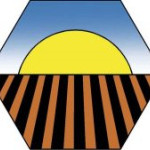- Sektör: Earth science
- Number of terms: 26251
- Number of blossaries: 0
- Company Profile:
An international scientific society that fosters the transfer of knowledge and practices to sustain global soils. Based in Madison, WI, and founded in 1936, SSSA is the professional home for 6,000+ members dedicated to advancing the field of soil science. It provides information about soils in ...
Aridisols which have a gypsic or petrogypsic horizon that has its upper boundary within 100 cm of the soil surface and lack a petrocalcic horizon overlying any of these horizons.
Industry:Earth science
Soil materials that are saturated with water and have 174 g kg-1 or more organic carbon if the mineral fraction has 500 g kg-1 or more clay, or 116 g kg-1 organic carbon if the mineral fraction has no clay, or has proportional intermediate contents, or if never saturated with water, have 203 g kg-1 or more organic carbon.
Industry:Earth science
Low molecular weight metabolites that enter the soil from plant roots.
Industry:Earth science
Alfisols that have an ustic soil moisture regime and mesic or warmer soil temperature regimes. Ustalfs are brownish or reddish throughout and are not saturated with water for periods long enough to limit their use for most crops.
Industry:Earth science
An intramolecular chemical bond between a hydrogen atom of one molecule and a highly electronegative atom (e.g. O, N) of another molecule.
Industry:Earth science
Pertaining to material or processes associated with transportation and/or deposition by mass movement (direct gravitational action) and local, unconcentrated runoff on side slopes and/or at the base of slopes.
Industry:Earth science
An organism whose optimum temperature for growth falls in the approximate range of 5 to 15°C. Synonymous with cryophile.
Industry:Earth science
An individual polygon shown by a closed boundary on a soil map that defines the area, shape, and location of a map unit within a landscape.
Industry:Earth science
A three-dimensional body of soil with lateral dimensions large enough to permit the study of horizon shapes and relations. Its area ranges from 1 to 10 m2. Where horizons are intermittent or cyclic, and recur at linear intervals of 2 to 7 m, the pedon includes one-half of the cycle. Where the cycle is <2 m, or all horizons are continuous and of uniform thickness, the pedon has an area of approximately 1 m2. If the horizons are cyclic, but recur at intervals >7 m, the pedon reverts to the l m2 size, and more than one soil will usually be represented in each cycle.
Industry:Earth science
A type of forest humus transitional between mull and mor (term used mostly in Europe; also called duff mull in USA and Canada). Sometimes differentiated into the following groups: Mormoder, Leptomoder, Mullmoder, Lignomoder, Hydromoder, and Sapimoder.
Industry:Earth science
